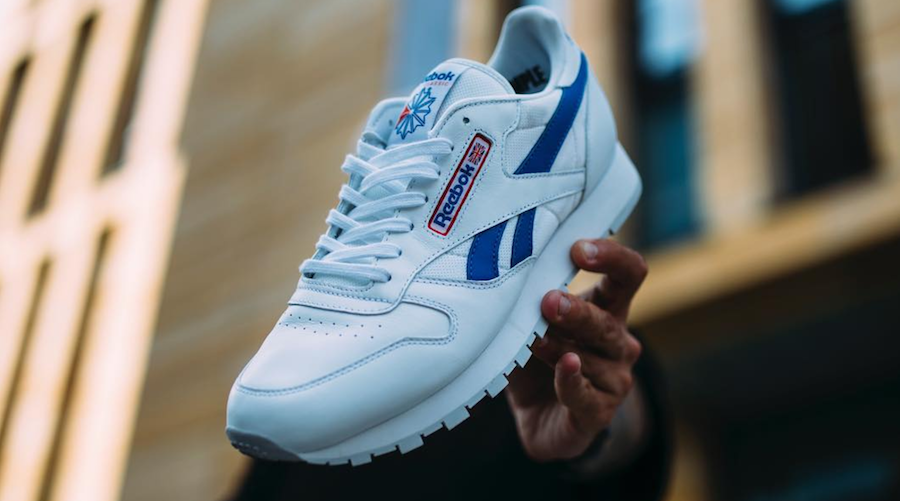Reebok is regaining traction in some key parts of the world but continues to see steep declines in North America due to an ongoing extensive reset in the region.
Overall, Reebok saw a 4.9 percent increase on a currency-neutral basis in the second quarter ended June 30. In euros, Reebok grew 7.9 percent to €431 million ($598 mm). Reebok accounted for 15.0 percent or Adidas AG’s sales in the period.
The gains on a currency-neutral basis were driven by strong double-digit growth in Classics. Gross margins for Reebok globally improved to 41.0 percent from 36.8 percent.
“We saw significant increases, significant growth increase in many regions, but also a significant decline in North America” said Kasper Rorsted, CEO OF Adidas on the company’s second-quarter conference call.
In the North America region, revenues slid 13.9 percent to €99 million ($116.8 mm) and were off 16 percent on a currency-neutral basis.
Rorsted said the decline in North America for Reebok largely reflects the closure of 35 stores as part of an overall clean-up of low-margin business in U.S. He said the brand still plans to close another half of its store fleet in the region. Rorsted added that the aggressive closures are coming “because we believe doing it quicker is better than doing it slowly.”
In 2016, it closed 23 own-retail stores, including half of its Reebok FitHub concept stores. Globally, Reebok had 344 stores open at the close of the second quarter, down from 373 at the same time a year ago.
Rorsted also said growth in North America in the second quarter was also restrained by “low or no marketing” in the region as Reebok works on “getting to the core of our business in North America.”
He adds, “We’re doing this at this stage because we believe we can afford to do so. That is impacting our growth rates in North America…So we believe that we are making progress in Reebok business.”
Harm Ohlmeyer, the company’s CFO, added about North America’s Reebok business, “We are rightsizing the retail fleet that we have for the Reebok brand and as Kasper mentioned the focus is more on profitability than on growth. And we want to have quality growth and that is a planned decline in the U.S. There is no surprise on the Reebok side.”
In 2016, Adidas AG created one united team for Reebok in North America, combining its Global and U.S. organizations under one leadership team, aimed at sharpening the brand’s focus on the needs of the U.S. consumer. This fall, Reebok move into new headquarters in Boston.
The change came as Reebok had seen growth over the last three years but noted that the brand has continued to grow at a slower pace compared to many of its competitors and isn’t growing in its home market, North America.
Companywide, sales in the second quarter for Reebok slowed from the 13 percent growth seen on a currency-neutral basis in the first quarter, as expected. The first-quarter growth, as noted previously, was boosted due to early launch of products and also a sales hike in Reebok’s Chinese business.
The two regions that stood out for growth for Reebok was Western Europe and China.
Reebok’s sales in Western Europe rose 32.1 percent to €107 million ($126 mm) and climbed 33 percent on a currency-neutral basis. Rorsted said the Western Europe marked “one of the highest growth areas that we have for the Reebok brand and the growth is going across all the key categories now.”
In Greater China, sales climbed 22 percent to €19 million ($22.4 mm) and grew 20 percent on a currency-neutral basis. The gains were primarily due to growth in the running and the training categories. Reebok saw growth of 30 percent in China in the first quarter, reflecting its accelerated efforts to expand in the region.
In the Russia/CIS region, sales rose 16 percent to €46 million ($54 mm) but dipped 1 percent on a currency-neutral basis.
In Latin America, sales rose 10 percent to €53 million ($63 mm) and grew 10 percent on a currency-neutral basis. In Japan, revenues grew 4 percent to €28 million ($33 mm) and increased 4 percent on a currency-neutral basis. In the MEAA (Middle East, Africa and other Asian markets), sales increased 5 percent to €74 million ($87 mm) and gained 2 percent on a currency-neutral basis.
In the Q&A session, Ohlmeyer noted that Adidas AG planned to “accelerate some of the rightsizing” at Reebok in the second half in slightly impact margins. These steps including planned closures in the U.S. and Russia/CIS, as well as clean-up efforts in Latin America.
Rorsted in the Q&A session said a deeper view of Reebok’s progress will be given when Adidas releases full-year results next March. He stated, “We are seeing signs of progress along the expectation we have with Reebok and when we come to full year results in March next year we’ll give you detailed overview of where we are with Reebok. But we are making the progress along the areas that we are striving to make.”
Photo courtesy Reebok
















